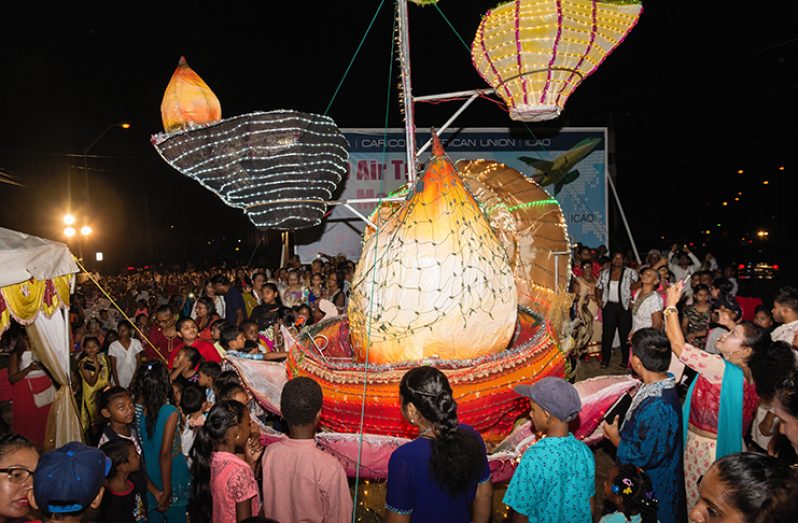THE Hindu festival of lights, Diwali, was ushered in on Sunday night at Rahaman’s Park, Greater Georgetown, with the illumination of a giant diya created by the Hindu Swayamsevak Sangh-Hindus for Selfless Service (HSS).

The diya is touted as the country’s National Diya and this is the fourth National Diya created by the HSS. Along with the creation of the diya, there was a cultural evening of dances, skits and music to portray the significance of the national holiday.
According to member of the HSS and one of the coordinators of the event, Aravind Narian, “It’s been customary for the four years that we would come up with a design or a structure and light it up as a national event.”
Furthermore, he said: “Diwali is not just about Hindus, it is about all Guyanese because we have a multiethnic nation; and we would like to have everyone involved in the celebrations.”

This year, the grand Diya was created with a specific symbolism. Narain explained that there are five Diyas on the structure, which signify the five nights Diwali is observed by Hindus. Moreover, each of the five Diyas is coloured in the colours of Guyana’s national flag- the Golden Arrowhead.
And there is an ‘Om’ at the top of the structure, which represents Hinduism. Youths of the HSS spent about three weeks, sometimes working until 1 0’clock in the mornings to get the design perfected.
Diwali signifies the triumph of good over evil and the lights and diyas are lit to signify the driving away of darkness and ignorance, as well as the awakening of the light within one’s self.

But importantly, according to India’s High Commissioner to Guyana Venkatachalam Mahalingam, “The most important [significance] of Diwali is the spirit of togetherness.”
He explained that during the festival, families and friends come together to share in the special moments. Additionally, he highlighted that women are revered during the festival.
For some, Diwali is observed to honour the Hindu goddess Mother Lakshmi, who is the giver of health, wealth and prosperity. Diwali also signifies the return of Lord Rama to his home in Ayodhya after being exiled for 14 years.




.jpg)











